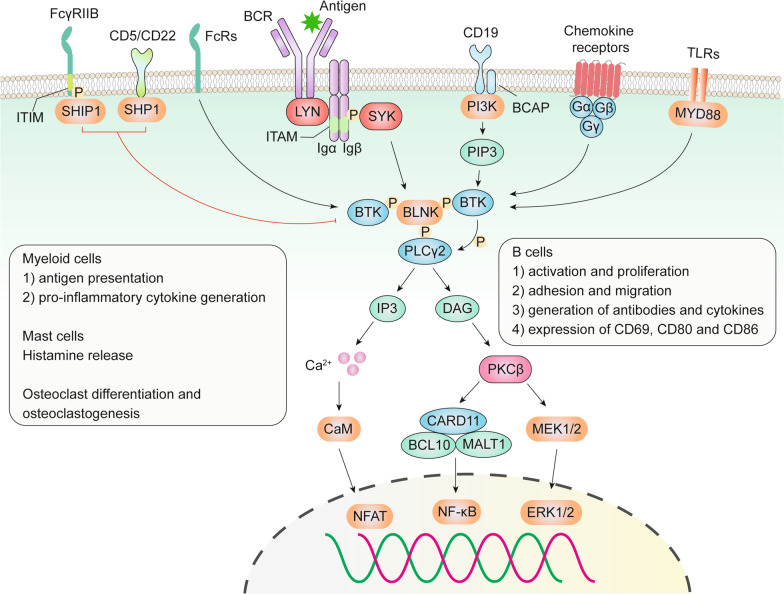Fig. 3.
Role of BTK in BCR signaling, TLR signaling, chemokine receptor signaling, and FcR signaling pathways. Upon antigen binding, BCR signaling is activated involving the formation of a “micro-signalosomes” composed of PI3K, BTK, BLNK, and PLCγ2. Activated BTK leads to the phosphorylation of PLCγ2 and stimulates its lipase activity, resulting in Ca2+ influx and the activation of the NFAT transcription factors via calmodulin (CaM). Activation of PLCγ2 also induces the activation of PKCβ via DAG, which subsequently activated the ERK1/2 and NF-κB signaling pathways. Activation of BCR signaling can promote B cell proliferation, survival, and functions. In addition, activation of TLR and chemokine receptors can activate BTK and regulate the adhesion, migration, and production of pro-inflammatory cytokines in B cells and myeloid cells. BTK-dependent FcR signaling is essential for histamine release from mast cells, enhanced antigen presentation and cytokine generation from myeloid cells, and controls osteoclast differentiation and osteoclastogenesis. SHIP1 and SHP1 are negative regulators of BTK’s activity

